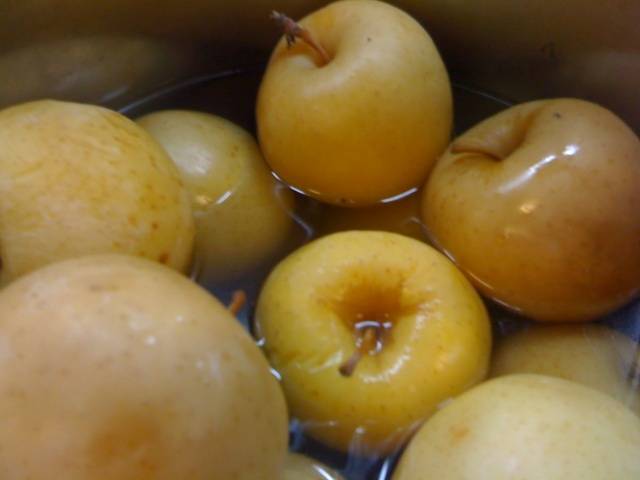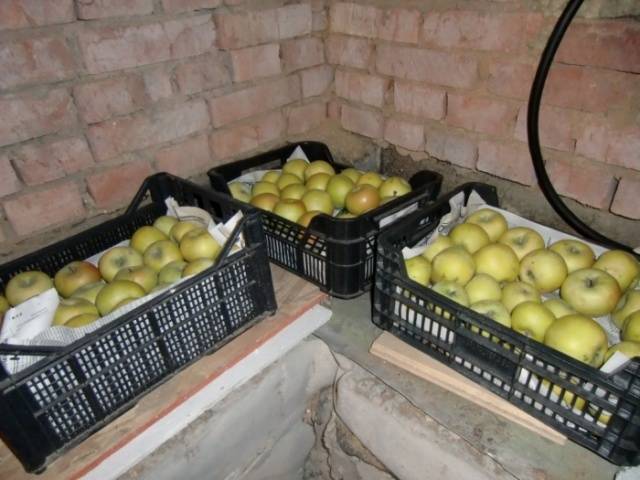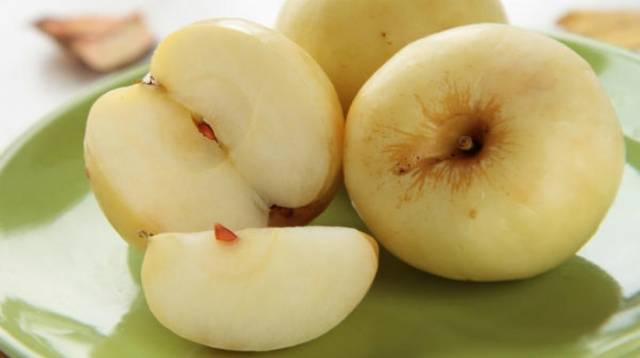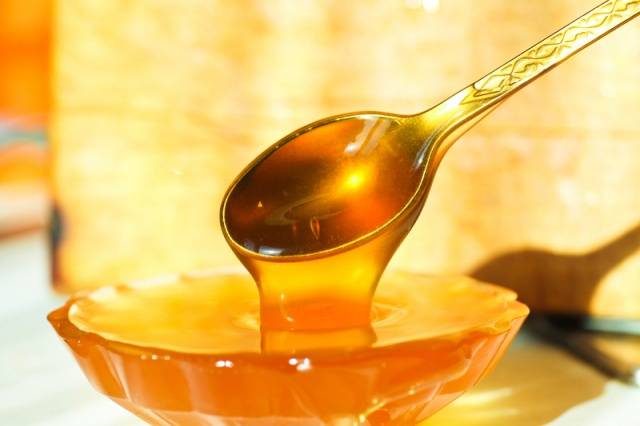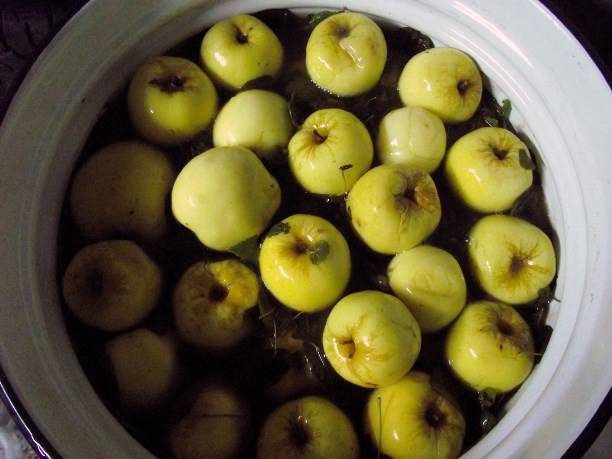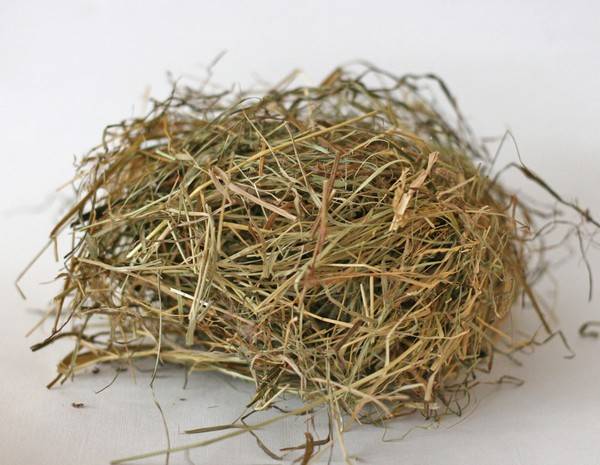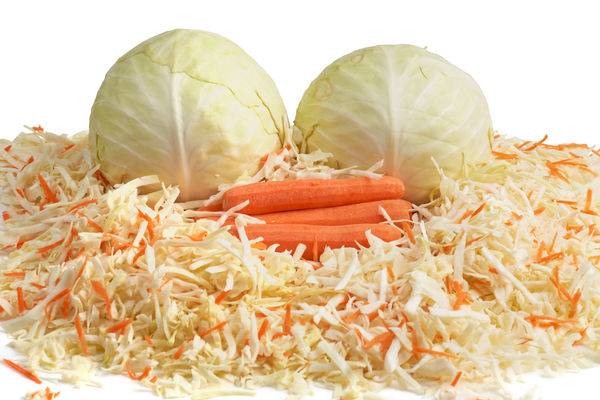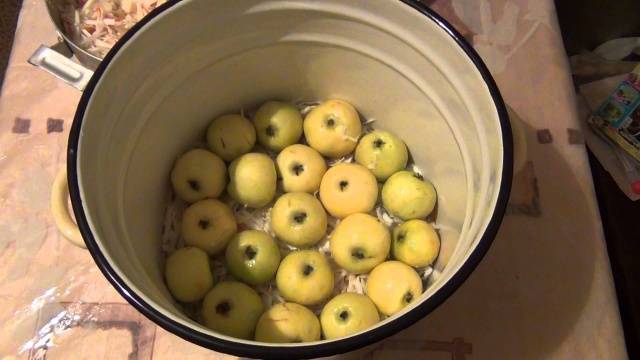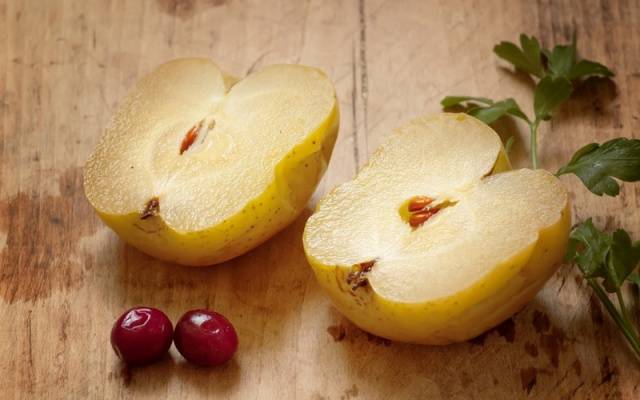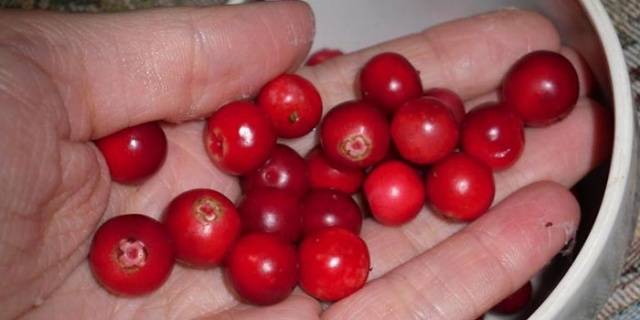Autumn has come, summer residents and residents of private houses are picking medium-ripening apples, making juices, jams, preserves and wines from them. The fruits on the market have become cheaper and more accessible, which indescribably pleases the inhabitants of megalopolises. Soon there will be a question about processing winter varieties of apples. Perhaps it is worth remembering how our grandmothers or great-grandmothers prepared them. And while a city apartment or a small country house is not designed for storing food in large wooden barrels, soaked apples in a bucket can be cooked and placed on a balcony or in any cool room.
Raw materials and containers for urination
If a wooden barrel is too big for you, and a three-liter jar is too small, an ordinary enameled bucket without chips and rust will come to your rescue. In it, you can perfectly wet apples for the winter. For this, it is better to choose late varieties that are plucked directly from the tree.
Select whole, healthy, medium-sized apples and place in drawers for 2-3 weeks to ripen. Then wash the enamel bucket with boiling water with the addition of soda, rinse with plenty of running water. Prepare a wooden circle for setting the oppression (this can be a plate or an inverted clean lid with a diameter smaller than the mouth of the bucket).
Soaked apple recipes
There are many recipes for soaking apples for the winter, and almost all of them take liberties - you can put more or less additional ingredients. But salt and sugar should be handled carefully - if you put a little of them, the fruits may simply turn sour, a lot - the taste may become too rich, which not everyone likes.
Do not forget that in the first week it is imperative to add water to the container. At this time, the fruits actively absorb moisture, and the surface of those lying on top is exposed, which can ruin the entire workpiece.
A simple recipe with honey
The easy-to-make recipe for soaked apples below does not require straw, which is especially important for city dwellers who simply have nowhere to get it.
Ingredients
For apples soaked in this way for the winter, you will need:
- apples - 1 bucket without top.
For brine, for every 3 liters of water:
- honey - 200 g;
- salt - 1 tbsp. the spoon.
Cooking Guide
Wash the bucket, put the apples tightly to each other, but do not press down so that they do not wrinkle.
Now you need to measure the amount of water needed. Its volume can vary greatly for each batch, because the fruits used for urinating can be of different sizes. Pour water into a bucket of apples, drain, determine its volume using a measuring glass or a liter jar.
Calculate the required amount of salt and honey, dissolve them in lukewarm boiled liquid, let cool completely.
Pour the apples with brine so that they are completely covered, press down with oppression, placing a jar of water or other weight on a plate or wooden circle, leave to ferment for 2-3 weeks.
Take the finished soaked apples out to the balcony or lower them into the cellar or basement.
With straw and rye flour
This is a more complex recipe, it is easy for villagers to prepare it, but summer residents or townspeople will have to get straw somewhere. Although it is rarely used in modern preparations, believe me, pickled apples made with the addition of wheat stalks not only have a unique taste. They acquire such an attractive golden hue that they become a dish that you are not ashamed to put even on a festive table.
Ingredients
For the preparation of this recipe, fruits of late varieties are needed, best of all Antonovka... Take:
- apples - 1 bucket;
- wheat straw - 1 bunch (about 0.5 kg);
- black currant leaves - 10 pcs.
To prepare brine for every 3 liters of water:
- rye flour - 2 tbsp. spoons;
- salt - 2 tbsp. the spoon;
- sugar or honey - 50 g;
- dry mustard - 3 tbsp. spoons.
Cooking Guide
Measure the correct amount of water as indicated in the previous recipe.
Rinse the straw, pour boiling water over it, let cool and squeeze thoroughly.
Boil the water by dissolving salt, sugar and adding dry mustard powder. Pour in the rye flour dissolved in a small amount of cool liquid. Stir well, let cool.
At the bottom of a clean bucket, line some steamed straw and currant leaves, lay a row of apples, on top - wheat stalks. Fill a bucket layer by layer, fill with wort, put oppression on top.
Check the fill level regularly for the first week, if necessary, add liquid from a container hidden in the refrigerator. Apples soaked in this recipe will be ready to serve in a month. Move the bucket to the cold.
With cabbage and carrots
This original recipe allows you to simultaneously cook pickled apples and ferment delicious cabbage.
Ingredients
You will need:
- medium-sized apples - 3 kg;
- late varieties of cabbage - 4 kg;
- carrots - 2-3 pcs.;
- salt - 3 tbsp. spoons;
- sugar - 2 tbsp. spoons;
- water.
Choose juicy cabbage and sweet carrots. Apples should really be small, otherwise they take a long time to cook.
Cooking Guide
Chop the cabbage, grate the carrots on a coarse grater. Stir, add sugar, salt, rub well with your hands so that the juice comes out.
In a clean bucket, first put a layer of cabbage, then apples, chopped vegetables on top, and so on to the top. Remember to tamp the contents carefully.
There should be a cabbage layer on top. Pour the remaining juice into a bucket, put oppression on top.
If the liquid does not protrude from under the load, dissolve a spoonful of salt and sugar in a glass of cold water, add to the apples soaked with cabbage.
Incubate for 2 weeks at room temperature, put in the cold.
With lingonberries and fruit tree leaves
Most residents of the southern regions saw lingonberries only in pictures or on TV. Even if they happen to buy this berry on occasion or receive it as a present, they are unlikely to soak apples with it. But the northerners may well diversify their diet by making preparations with lingonberries, which will give them a beautiful color, unique taste and become much more useful.
Ingredients
You will need:
- apples - 10 kg;
- lingonberry - 0.25 kg;
- sugar - 200 g;
- salt - 50 g;
- rye flour - 100 g;
- cherry and black currant leaves - 7 pcs.;
- boiled water - about 5 liters.
Cooking Guide
Boil water, adding salt and sugar. Dissolve rye flour with a small amount of cold liquid, pour into boiling water. Stir well, let cool.
Put half of clean currant and cherry leaves on the bottom of the bucket, lay the apples tightly, sprinkling them with lingonberry fruits. Fill with cooled brine. Place the remaining leaves on top and set the oppression.
After 2 weeks, take the bucket to your cellar or basement.
Conclusion
We have provided just a few of the many recipes for peeling apples, we hope you enjoy them. Enjoy your meal!
